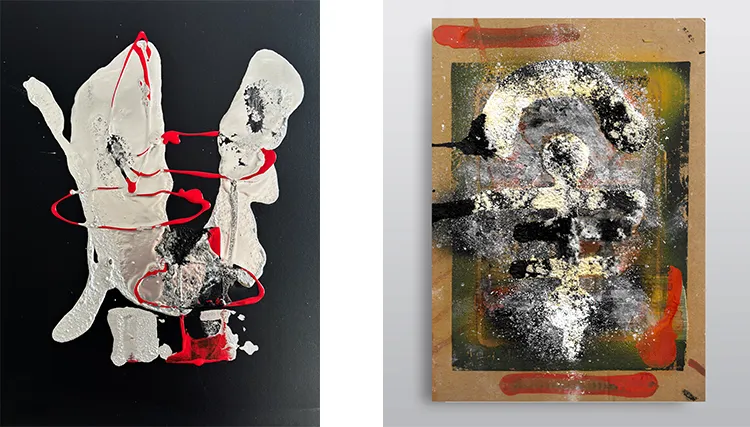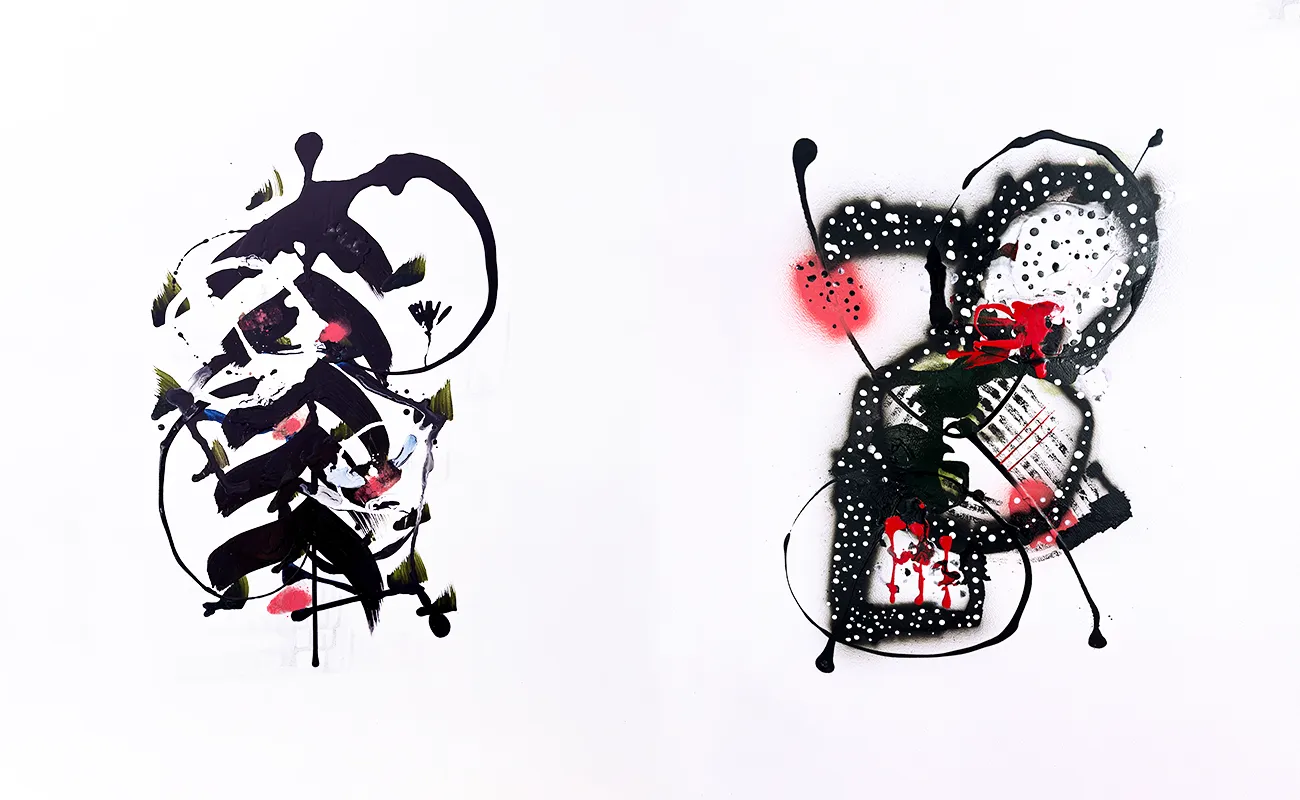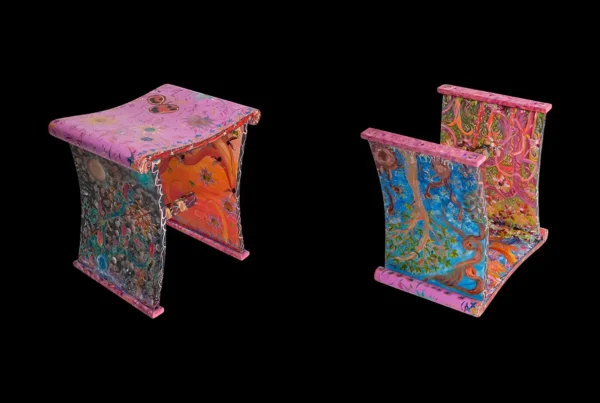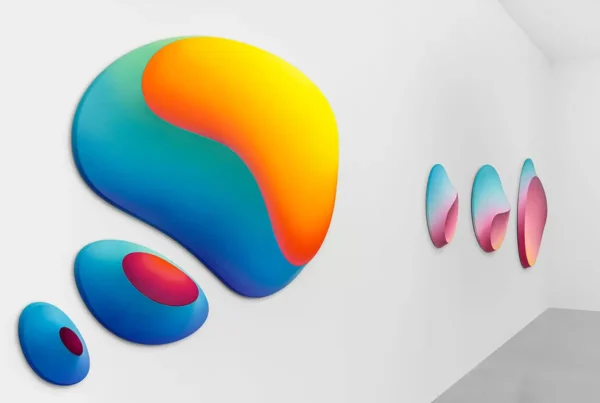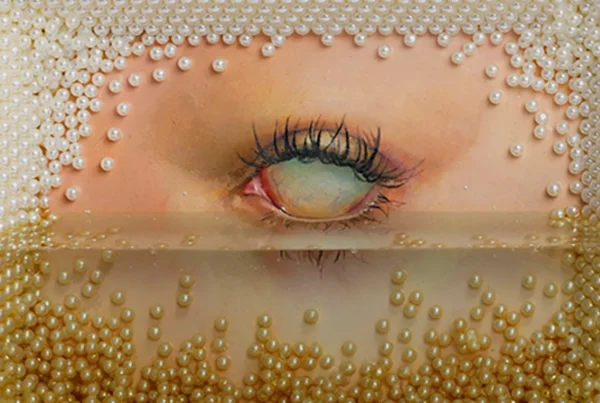“My aim is to transform typography into a universal form, transcending cultural and historical limitations.”
Universal Narratives: The Art of Itamar Heifetz
Itamar Heifetz’s journey as an artist is deeply intertwined with his heritage and life experiences. Born and raised in Jerusalem, Heifetz was surrounded by the rich and complex cultural landscapes of the Middle East, where languages and symbols coalesce and influence daily life. As a young man, he ventured to New York City, enrolling at The New School to study film before delving into printmaking at the School of Visual Arts. This blend of cinematic storytelling and hands-on printmaking provided a foundational mix of narrative depth and tactile engagement, which would come to define his artistic approach. Upon returning to Israel, Heifetz made Tel Aviv his home base, dedicating his time to painting and graphic design, where the region’s linguistic nuances continue to shape his vision.
For Heifetz, Hebrew is more than a language; it is a potent visual element that bridges his identity and artistic output. His fascination with Hebrew typography reflects a commitment to pushing beyond the functional aspect of language, turning letters and symbols into expressive forms. This exploration is fueled by the linguistic diversity of the Middle East, where languages overlap, challenge, and complement each other. Heifetz’s background and location provide a constant reminder of this interwoven cultural tapestry, which inspires him to approach each project with a desire to interpret these tensions and harmonies visually.
Throughout his work, the Hebrew language serves as an evolving framework rather than a boundary. By liberating letters from their conventional functions, Heifetz transcends cultural confines and finds new ways to express universal emotions. His art echoes his journey across cities and cultural zones, embedding symbols with layers of meaning and emotional resonance that reflect both his personal and professional evolution.
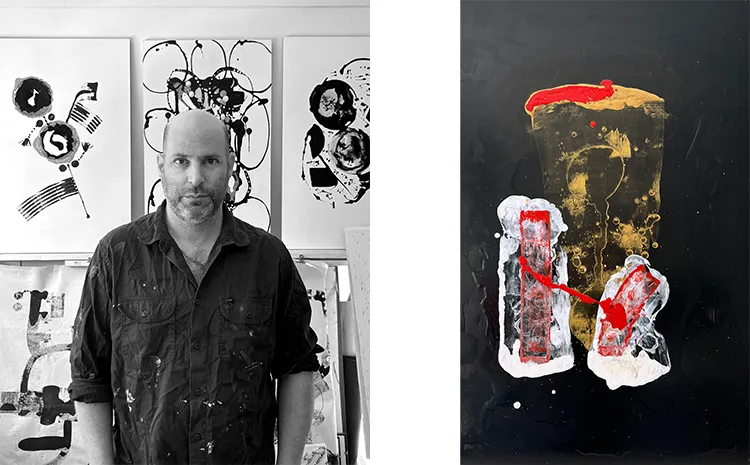
Itamar Heifetz: A Lifelong Attraction to Symbolism and Form
Heifetz’s artistic inclinations began well before he could formalize them into a career. From an early age, he found himself captivated by ancient symbols, particularly Egyptian hieroglyphs, which he saw as mysterious and powerful expressions of human communication. This early attraction to the visual language of symbols set the stage for his later work, as he discovered the inherent beauty in objects and images that carried history, mystery, and cultural weight. The medieval imagery of knights and castles also sparked his imagination, drawing him into a world where art embodied more than aesthetics, but functioned as a conduit of deeper stories and symbols.
It was during his time in New York that Heifetz encountered printmaking, a pivotal experience that profoundly impacted his trajectory. Printmaking’s tactile, layered process drew him in, allowing him to meld his fascination with ancient symbols and the immediacy of hands-on creation. The medium’s ability to convey complex emotions and narratives through repeated forms resonated with Heifetz, who saw it as a way to communicate without the need for literal representation. Here, art was no longer just a visual experience but a physical and emotional one, encompassing a broad spectrum of sensations and ideas.
Heifetz’s practice has evolved significantly from these foundational interests, blending his fascination with the historical and symbolic into a modern, abstract language. The balance between form and meaning, precision and freedom, continues to define his artistic journey, where each piece is both a reflection of his inner world and a conversation with a broader cultural history.
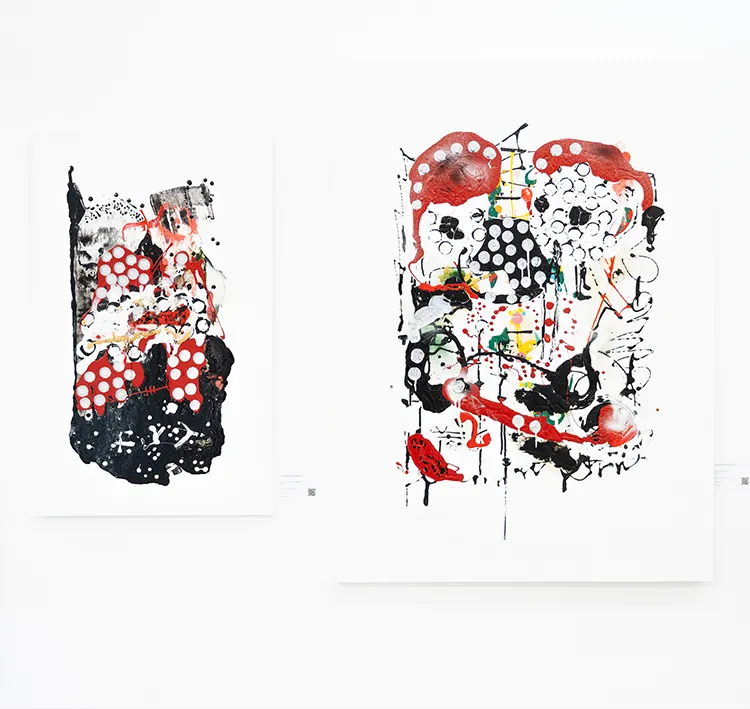
Pushing the Limits of Typography and Abstract Expression
At the core of Itamar Heifetz’s work lies an exploration of Hebrew typography as a bridge between the material and emotional worlds. This focus on typography goes beyond mere lettering—it is a quest to reinterpret the boundaries of language through shape, form, and rhythm. Rather than using words to communicate traditional messages, he reshapes them into visual elements that convey raw emotion and energy. This deconstruction allows Heifetz to explore the primal qualities of symbols, moving them from literal representations to organic, fluid forms that evoke universal feelings beyond linguistic borders.
His approach to typography is both technical and expressive, balancing the structure of graphic design with the fluidity of calligraphy. As Heifetz reconstructs letters and symbols, he creates a dialogue between the familiar and the abstract. Each stroke and line holds a rhythm, capturing the essence of language while defying its conventional purpose. By liberating words from their functional constraints, Heifetz seeks to create a new kind of language, one that is felt rather than read, transcending cultural and historical limitations to form a more instinctive, shared visual experience.
The result is a body of work that blurs the line between typography and abstract art, generating pieces that feel alive with energy. Heifetz’s art becomes a visual symphony where letters transform into brushstrokes, words dissolve into colors, and symbols take on new life. This fusion of typography and abstraction is a testament to his commitment to reimagining language, inviting viewers to see words and symbols not as static objects but as dynamic carriers of meaning.
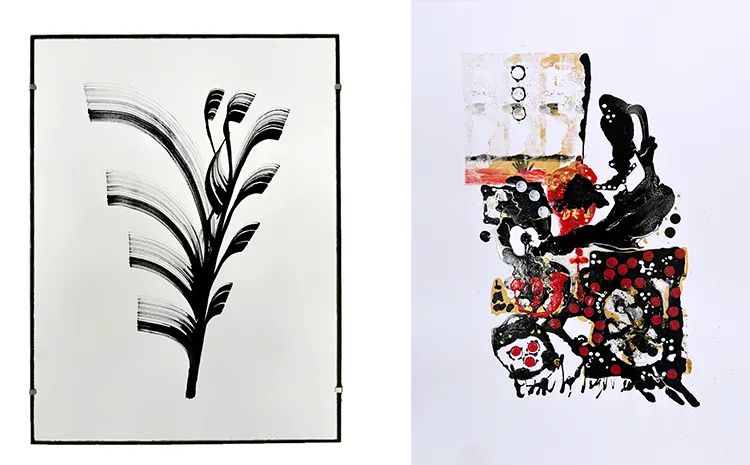
Itamar Heifetz: Inspirations, Influences, and Aspirations
A wide range of influences shape Heifetz’s artistic philosophy, each one contributing to his unique visual language. Abstract painter Joan Mitchell is a notable influence, whose work resonates with him for its raw, natural inspiration and emotional intensity. A specific untitled painting by Mitchell, featuring a palette of greens and blacks, has left a profound impact on Heifetz, evoking complex feelings while inspiring him with its bold, organic forms. Mitchell’s ability to channel deep emotion through abstract elements aligns with Heifetz’s own goals, reinforcing his belief in art as an expression of inner experience.
Alongside Mitchell, Heifetz draws inspiration from Joan Miró, who infuses his abstract works with a touch of the symbolic. Miró’s innovative use of space and his typographic brushwork have profoundly influenced Heifetz, as he explores the interplay between language and abstraction. Additionally, the work of Jonathan Lasker offers insights into the power of contrast, both in terms of composition and color. Lasker’s spontaneous yet structured approach to canvas allows Heifetz to contemplate balance, while type designer Adrian Frutiger’s exploration of shape and form in typography offers a technical perspective that complements Heifetz’s graphic design background.
Currently, Heifetz is working on a project that brings his artistic aspirations to new levels. “Emotional Monograms” is a concept centered on capturing the energy of words and emotions through abstracted symbols. This endeavor reflects his lifelong fascination with merging personal, abstract elements with the structured symbolism of type. By deconstructing language into strokes and shapes, Heifetz creates a visual language that explores the essence of human expression, combining technical precision with an instinctive, emotional drive. Through this project, he continues to push the boundaries of what language can be, blending art, emotion, and typography into an expressive, universal form.
